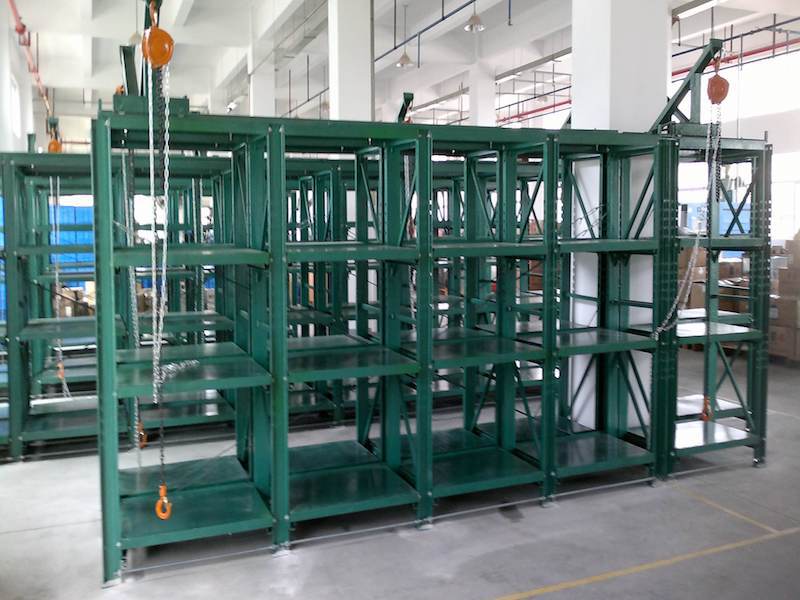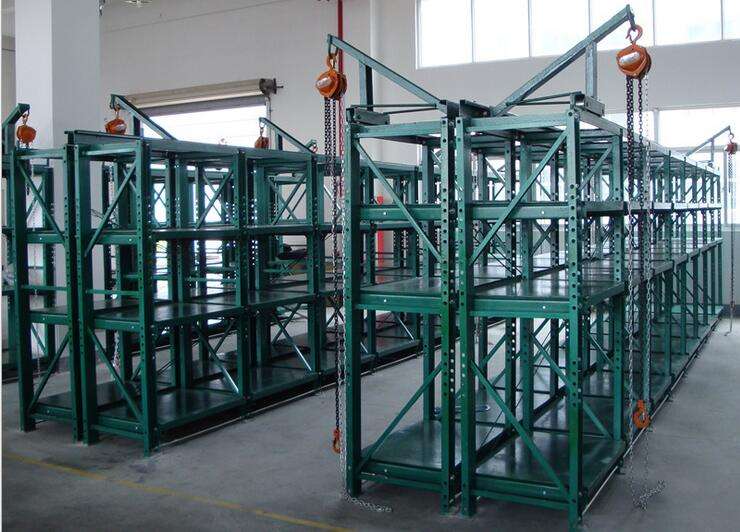In the realms of storage, organization, and industrial logistics, the term rack metálico (metal shelving or racking) signifies a foundational solution. These versatile and durable systems are ubiquitous, found everywhere from cluttered garages and organized retail backrooms to massive, automated distribution centers. A rack metálico is fundamentally a structure made from assembled metal components, designed to store items in an efficient, accessible, and safe manner. The choice of metal—typically steel—as the primary material offers unparalleled strength, longevity, and resistance to damage compared to wood or plastic alternatives. Whether you're looking to organize tools, archive files, or store heavy palletized goods, understanding the intricacies of a rack metálico is the first step toward optimizing your space. This comprehensive guide explores five critical aspects you must consider, ensuring you select the perfect metal racking system for your specific needs, budget, and long-term goals.

What is a Rack Metálico? Core Definition and Fundamental Characteristics
A rack metálico is a structural framework fabricated from metal, primarily designed for storage purposes. Its core function is to utilize vertical space, transforming empty air into functional storage real estate. The defining characteristic of any rack metálico is its material composition. The use of steel, and sometimes aluminum or other alloys, provides several inherent advantages:
High Strength-to-Weight Ratio: Metal can support significant loads without itself being excessively heavy or bulky. This allows a rack metálico to hold hundreds or even thousands of pounds of inventory while maintaining a relatively slim profile.
Durability and Longevity: Unlike wood, metal is not susceptible to rot, warping, or pest infestation. It is also highly resistant to fire and chemicals (especially with proper coatings), ensuring a long service life.
Structural Integrity: A well-designed rack metálico maintains its shape and stability under load, preventing sagging or collapse that can occur with lesser materials. This structural integrity is paramount for safety.
The basic anatomy of a standard rack metálico includes vertical frames (uprights) and horizontal beams. The uprights feature pre-punched holes or slots at regular intervals, allowing the beams to be adjusted to different heights, thus offering customizable shelf spacing. Many systems also incorporate decking—sheets of wire mesh, solid steel, or particle board—that sit on the beams to provide a surface for items to rest on. This modular, adjustable design is what makes the rack metálico such a universally adaptable storage solution.
Main Types and Configurations of Rack Metálico
Not all storage needs are created equal, and the market reflects this with a diverse range of rack metálico types. Choosing the right configuration is crucial for maximizing efficiency and return on investment.
Selective Pallet Racking: This is the most common type of heavy-duty rack metálico found in warehouses. It provides direct, unrestricted access to every single pallet load, making it ideal for facilities with a high number of SKUs where any pallet might need to be retrieved at any time. Its open design facilitates easy inventory rotation, typically following a First-In, First-Out (FIFO) approach.
Cantilever Racking: A specialized rack metálico designed for long, bulky, or irregularly shaped items such as lumber, piping, furniture, or rolls of material. It consists of vertical columns (uprights) with horizontal arms that extend outward. The key feature is the absence of front-column obstructions, allowing items to be loaded and unloaded from the side with ease.
Drive-In/Drive-Through Racking: A high-density rack metálico configuration where the storage structure itself becomes an aisle. Forklifts drive directly into the rack to place or retrieve pallets. Drive-in racks have a single entrance for Last-In, First-Out (LIFO) inventory, while drive-through racks have entries on both ends for FIFO. This type sacrifices some accessibility for significantly greater storage density.
Shelving Units (Industrial Shelving): While often lighter than pallet racking, industrial shelving is a vital category of rack metálico. These are often boltless systems, meaning shelves clip or lock onto the uprights without tools for easy adjustment. They are perfect for smaller parts, tools, boxes, and documents in bins. Types include light-duty open shelving, closed cabinet styles for security, and mobile shelving systems that compress aisles to save space.
Mezzanine Flooring with Integrated Racking: This solution involves installing a rack metálico system as the structural support for a new elevated working level (mezzanine). This brilliantly doubles the usable floor space, creating a top level for offices or production and an underneath area for storage, all within the same building footprint.
Materials, Manufacturing, and Key Features
The performance, longevity, and appropriate application of a rack metálico are directly determined by the materials used and the quality of its manufacturing process.
Material Grades and Types:
Rolled Steel: The most common material for heavy-duty rack metálico. Steel coils are roll-formed into specific profiles (like C-shaped or teardrop uprights) to achieve maximum strength. The thickness of the steel, measured by its gauge, is a primary indicator of load capacity.
Structural Steel: Used for the largest and most heavy-duty applications, such as structural pallet racking. These components are often heavier and are designed to be bolted together for immense strength.
Wire: Commonly used for decking and in lighter shelving units. Wire mesh decking improves airflow and visibility and prevents dust accumulation.
Coatings and Finishes: To prevent rust and corrosion, metal components are almost always treated. Common finishes include powder coating (a durable, baked-on paint) and electroplating (e.g., zinc galvanization), which provides a sacrificial layer of protection, especially important in humid or cold storage environments.
Key Features to Look For:
Adjustability: The ability to easily change shelf heights is a critical feature of a versatile rack metálico. Look for systems with intuitive locking mechanisms.
Load Capacity Ratings: Every reputable rack metálico will have clear load capacity ratings, both for each individual shelf and for the overall unit. Never exceed these ratings.
Safety Features: This includes beam safety locks that prevent beams from being accidentally dislodged by forklift impact, column protectors (guard rails), and anti-tip devices for freestanding units.
Boltless vs. Bolted Design: Light-to-medium-duty shelving often uses a boltless design for tool-free assembly. Heavy-duty pallet racking is always bolted for ultimate stability and safety.

Critical Considerations for Selection and Design
Selecting the right rack metálico is a strategic decision. A poorly planned system can be inefficient, unsafe, and costly. Here are the key factors to analyze:
Assessing Your Storage Needs: Begin by auditing what you need to store.
Inventory Analysis: What are the dimensions and weight of your items? Are they on pallets, in boxes, or loose? What is the total volume of inventory?
Accessibility Requirements: How often do you need to access each item? Do you require 100% selectivity (every item accessible) or is a high-density, deeper storage system acceptable?
Future Growth: Plan for not just your current needs, but also projected future growth. A scalable rack metálico system can save you from a complete overhaul later.
Space and Layout Planning: Precisely measure your available space.
Dimensions: Note the room's length, width, and, crucially, the clear ceiling height. Remember to account for obstacles like lights, sprinklers, and support columns.
Aisle Width: The type of material handling equipment you use (e.g., forklifts, walkie stackers, manual carts) dictates the required aisle width. Narrow-aisle equipment can drastically increase storage density by allowing for tighter rack metálico configurations.
Budget and Total Cost of Ownership (TCO): Consider more than just the initial purchase price.
Initial Cost: Includes the price of the rack metálico components, decking, and any accessories.
Installation Cost: Professional installation is highly recommended for large or heavy-duty systems to ensure safety and compliance.
Maintenance and Inspection: Factor in the cost of periodic professional inspections and any potential repairs or replacements parts over the system's lifespan.
Advantages, Applications, and Best Practices
Implementing a well-chosen rack metálico system delivers a powerful return on investment across a vast spectrum of applications.
Key Advantages and Benefits:
Maximized Space Utilization: The primary benefit. By storing vertically, you dramatically increase storage capacity without expanding your building's footprint.
Improved Organization and Efficiency: A place for everything and everything in its place. This reduces time spent searching for items, streamlines picking processes, and boosts overall operational productivity.
Enhanced Safety: Properly storing items on a rack metálico eliminates the hazards of unstable stacks and clutter on the floor, reducing the risk of falling objects and tripping accidents. It also protects your inventory from damage.
Durability and Cost-Effectiveness: The long lifespan and minimal maintenance requirements of a quality rack metálico make it an extremely cost-effective solution over time.
Common Applications:
Warehousing and Distribution: The backbone of the logistics industry for storing raw materials, work-in-progress, and finished goods.
Retail: Stockrooms and big-box stores use rack metálico for overstock and organized product staging.
Manufacturing: Storing tools, parts, and components on the shop floor for easy access by assembly lines.
Archives and Libraries: High-density mobile rack metálico is used to store files, books, and historical documents.
Garages and Homes: Light-duty metal shelving organizes everything from holiday decorations to automotive supplies.
Best Practices for Safety and Maintenance:
Never Exceed Load Capacity: This is the cardinal rule. Load ratings are not suggestions.
Distribute Weight Evenly: Place heavier items on lower shelves and distribute weight evenly across each shelf to maintain stability.
Secure the System: Anchor tall, freestanding units to the wall or floor to prevent tipping.
Regular Inspections: Conduct regular visual inspections for signs of damage, such as bends, cracks, or rust. Schedule professional inspections periodically, especially after any impact.
Train Personnel: Ensure anyone who loads, unloads, or operates equipment around the rack metálico is trained on safe practices.
A rack metálico is far more than simple shelving; it is a strategic asset that brings order, efficiency, and safety to any space. From understanding its core characteristics and the various types available to carefully considering materials, design, and application, an informed approach is essential. By thoroughly evaluating your needs and adhering to safety best practices, your investment in a rack metálico will pay dividends for years to come. It is a versatile, durable, and indispensable tool for unlocking the full potential of your storage environment, whether at an industrial scale or within your own home.







